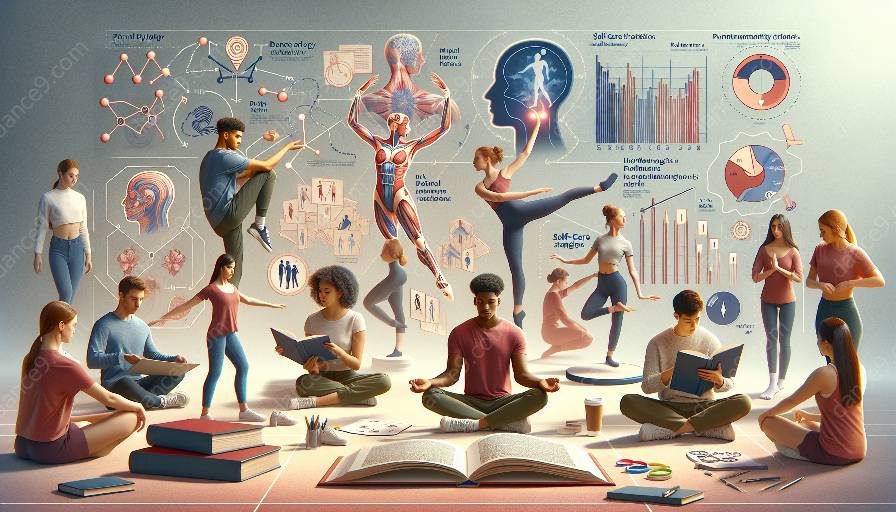Dance is a physically demanding art form that requires stamina, flexibility, and strength. As such, preventing and managing dance-related injuries and strains is crucial for dancers to maintain their physical and mental well-being. In this comprehensive guide, we will explore effective self-care strategies and their role in promoting the health of dancers, as well as the interplay between physical and mental health in the context of dance.
The Importance of Self-Care Strategies
Self-care strategies play a pivotal role in preventing and managing dance-related injuries and strains. Dancers often push their bodies to the limit, exposing themselves to the risk of overuse injuries, muscle strains, and more. By incorporating self-care practices into their daily routines, dancers can nurture their bodies, enhance their performance, and reduce the likelihood of injuries.
Physical and Mental Health in Dance
Physical and mental health are intricately intertwined in the world of dance. Dancers must maintain a balance between staying physically fit and nurturing their mental well-being. The demanding nature of dance can place significant stress on the body and mind, making it imperative for dancers to prioritize both aspects of their health.
Effective Self-Care Strategies for Dancers
1. Proper Warm-Up and Cool Down: Dancers should dedicate time to warming up their muscles before intense practice or performance, as well as cooling down to aid in muscle recovery.
- 2. Cross-Training: Engaging in activities outside of dance, such as yoga or swimming, can help prevent overuse injuries and improve overall fitness.
- 3. Adequate Rest and Recovery: Dancers should prioritize rest and recovery to allow their bodies to heal and rejuvenate after strenuous physical activity.
- 4. Nutritious Diet: Consuming a well-balanced diet rich in nutrients, vitamins, and minerals is essential for supporting the body's optimal function and repair.
Understanding Common Dance-Related Injuries and Strains
Dancers are susceptible to a range of injuries and strains, including but not limited to:
- 1. Ankle Sprains
- 2. Knee Injuries
- 3. Muscle Strains
- 4. Overuse Injuries
It is critical for dancers to be aware of these common issues and take proactive measures to prevent them through proper training, conditioning, and self-care.
Seeking Professional Guidance
While self-care strategies are vital for preventive measures, dancers should also seek professional guidance from healthcare professionals, such as physical therapists and sports medicine specialists, to address any existing injuries or strains effectively. Additionally, mental health professionals can provide support for the psychological aspects of dance-related pressures and challenges.
Conclusion
Preventing and managing dance-related injuries and strains requires a holistic approach that encompasses self-care strategies, physical conditioning, and mental well-being. By prioritizing self-care and seeking professional guidance when needed, dancers can sustain their passion for dance while safeguarding their physical and mental health.


































